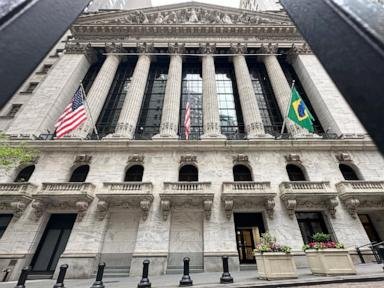TOKYO — Asian shares mostly fell Tuesday, even as most U.S. stock indexes finished higher, especially technology issues like Nvidia.
Japan’s benchmark Nikkei 225 rose 0.2% in early trading to 39,141.08. Australia’s S&P/ASX 200 lost 0.2% to 7,851.90. South Korea’s Kospi fell 0.4% to 2,732.26. Hong Kong’s Hang Seng dove 2.1% to 19,233.09, while the Shanghai Composite shed 0.4% to 3,159.90.
In Asia, investors are focused on signs about the health of Chinese economy. S&P Global Market Intelligence raised this year’s growth forecast to 4.8% from 4.7% in April, but stressed it was not overly optimistic.
“The overall outlook of a tepid economic recovery remains unchanged, with the expansion supported by enhanced policy stimulus, strengthening external demand and gradually improving private-sector confidence,” it said in a report.
Monday on Wall Street, the S&P 500 rose 0.1% to 5,308.13 and pulled within 0.02 of its record set last week. The Nasdaq composite gained 0.7% to 16,794.87 to set its own all-time high.
The Dow Jones Industrial Average slipped 0.5% to 39,806.77 in its first trading after closing above the 40,000 level for the first time on Friday.
Norwegian Cruise Line helped lead the market and steamed 7.6% higher after giving financial forecasts for the year that topped analysts’ expectations. It said demand is growing for cruises, and some of its competitors gained in its wake. Carnival rose 7.3%, and Royal Caribbean Group gained 4.1%.
All three of the big U.S. stock indexes set records last week in large part because of revived hopes that the Federal Reserve will be able to cut interest rates this year as inflation hopefully cools. More reports showing big U.S. companies are earning fatter profits than expected also boosted stock prices.
This upcoming week has few top-tier economic reports, like last week’s headliner that showed inflation may finally be heading back in the right direction following a discouraging start to the year. But some potentially market-moving reports on corporate profits are on the calendar.
Atop them all is Nvidia, whose rocket ride amid a frenzy around artificial-intelligence technology has been a major reason for the S&P 500’s gains over the last year. It will report its latest quarterly results on Wednesday, and expectations are high. Analysts are forecasting its revenue more than tripled to $24.59 billion from a year earlier.
Its stock climbed 2.5% to bring its gain for the year so far to 91.4%.
Several retailers are also on the schedule, including Lowe’s on Tuesday, Target on Wednesday and Ross Stores on Thursday. They could offer more details on how well spending by U.S. households is holding up. Pressure has been rising on them amid still-high inflation, even if it’s not as bad as before, and cracks seem to be most visible among the lowest-income customers.
In the bond market, yields ticked a bit higher. The yield on the 10-year Treasury rose to 4.44% from 4.42% late Friday. The two-year yield, which more closely tracks expectations for Fed action, ticked up to 4.84% from 4.83%.
The Federal Reserve on Wednesday will release the minutes from its latest meeting, where it again held its main interest rate at the highest level in more than two decades. The hope is that the Fed can manage the delicate balancing act of grinding down the economy through high interest rates by just enough to get inflation under control but not so much that it causes a painful recession.
Traders are putting an 88% probability on the Fed cutting its main interest rate at least once this year, according to data from CME Group.
In other trading, benchmark U.S. crude fell 40 cents to $79.40 a barrel. Brent crude the international standard declined 36 cents to $83.35 a barrel. There were some gains earlier following the death of Iran’s president in a helicopter crash.
The U.S. dollar edged up to 156.47 Japanese yen from 156.27 yen. The euro cost $1.0855, down from $1.859.
___
AP Business Writer Stan Choe contributed.
